The idea for a thick cut Seared Vegetable Trio comes from my time as a brunch cook at Aphrodite’s Organic Cafe and Pie Shop in beautiful British Columbia, Canada.
We used to make special variations of poached eggs with hollandaise sauce.
One of my favorites involved thick chunks of butternut squash. Ever since then, leftover vegetables always go on my toast. It is just an awesome way to eat more vegetables.
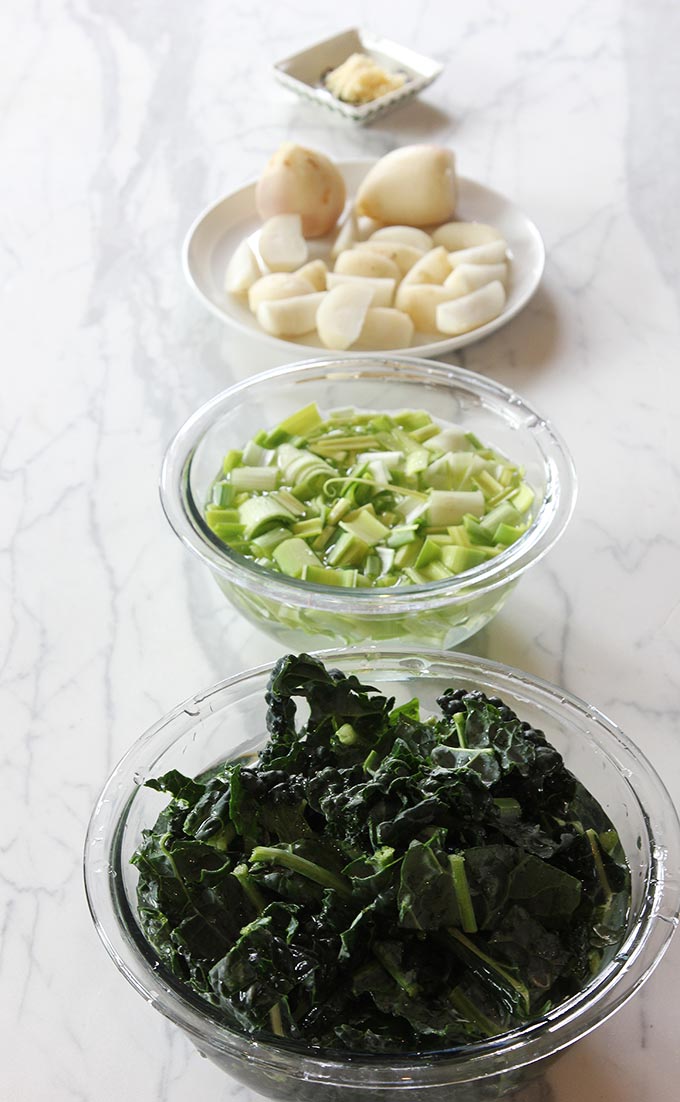
For this recipe, I envisioned eating the seared vegetable trio of carrot, daikon, and collards on toast along with my 5-minute Savory Tofu, a recipe I published earlier this week.
The sweetness of the carrot combines well with the pungency of the daikon radish, and balances the sharp astringent taste of the collard greens.
I really enjoy the tofu and seared vegetable trio with well-made sourdough bread toast, but you can enjoy it as is, or with cooked grain or salad.
You could also use this method of vegetable cooking to prepare vegetables for crudités, or for a vegetarian antipasto platter. Or get creative, and use different roots or leafy greens.
I actual relish this mix because it helps me to eat collards and radish, which are two vegetables that are more challenging to bring into my diet.
I am a big believer in eating a diversity of vegetables, so the more ways I have to cook a vegetable, the happier I am.
The Seared Vegetable Technique
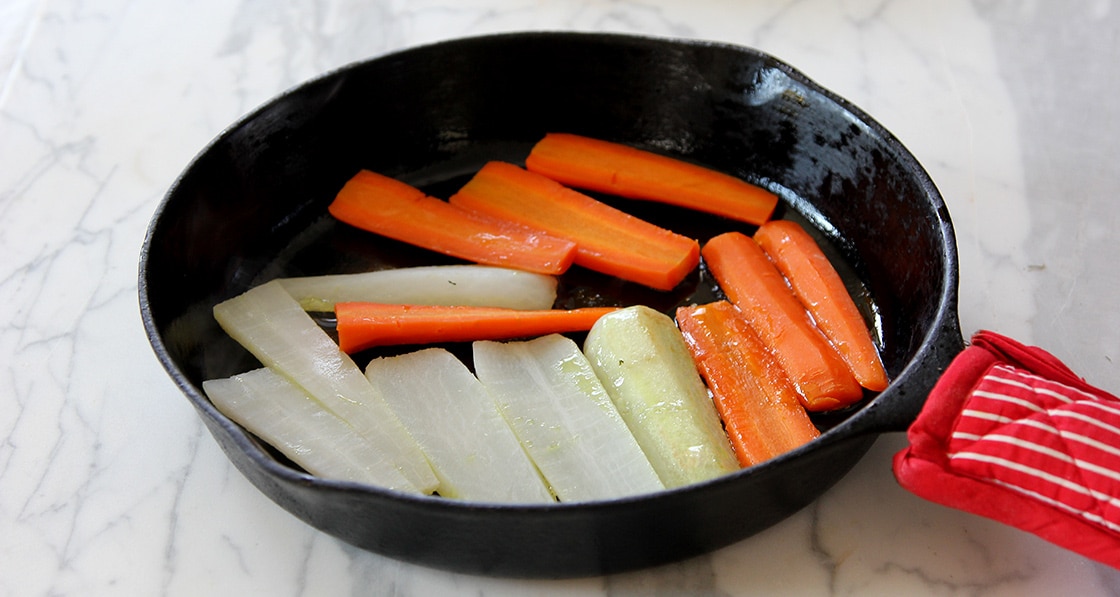
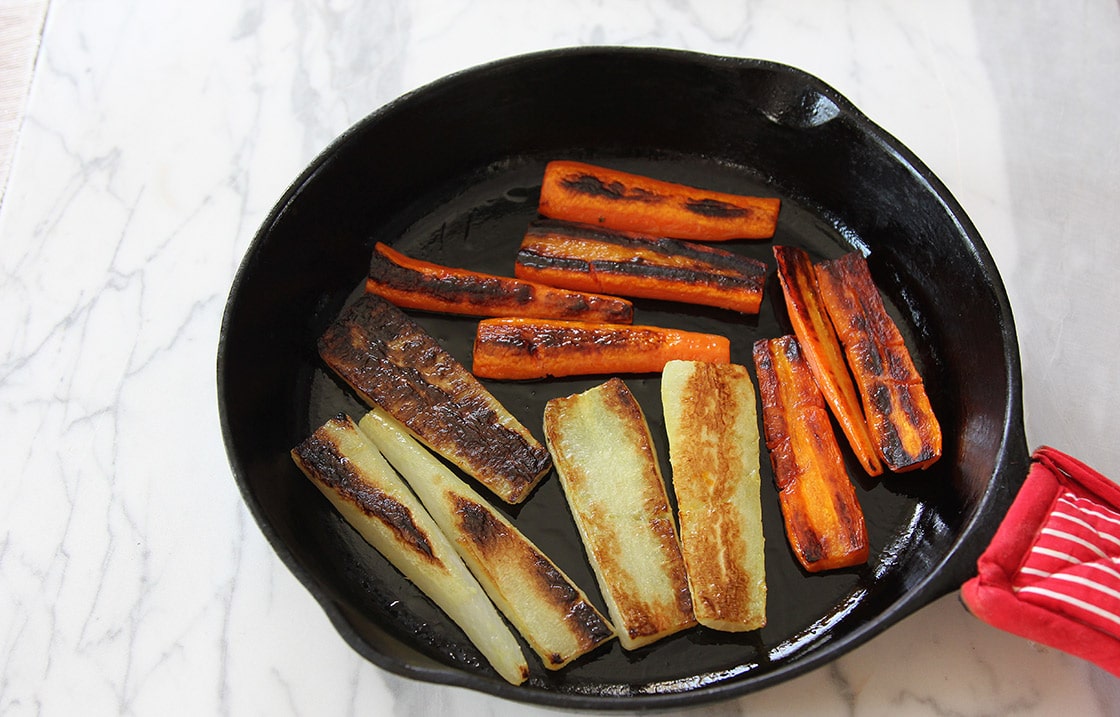
Searing is a technique whereby food is cooked at a high temperature, so that browning, or caramelization of the food, occurs.
With this recipe, you want to have that caramelization, because it adds volumes to the flavor of the vegetables, but you must be careful that your oil doesn’t burn.
Caramelization starts when your cooking surface reaches 320 degrees Fahrenheit.
Unrefined oils, such as extra virgin olive oil, will begin to smoke at 320 degrees, and this can transfer off flavors to the food.
Even worse, a burned oil contains free radicals that are known to be cancer causing. So you really want to avoid burning your oil!
For this recipe, please use a refined oil that is designed for high heat cooking, such as expeller pressed canola oil, or refined grapeseed, sunflower, almond, or safflower oil. These can withstand temperatures of up 400 degrees or more before burning.
At the same time, as you cook, watch the skillet carefully and adjust your heat down if necessary.
It is always a good idea to be patient with the food when sautéing or searing.
Let it take longer to brown, and you will be rewarded with better-tasting and healthier food.
#DaikonRadish
I am going to take a guess that not everyone reading this is familiar with daikon radish? It is similar to the common round red radish, but it actually looks more like extra-long white carrots. Typically, the root is even longer than a carrot.
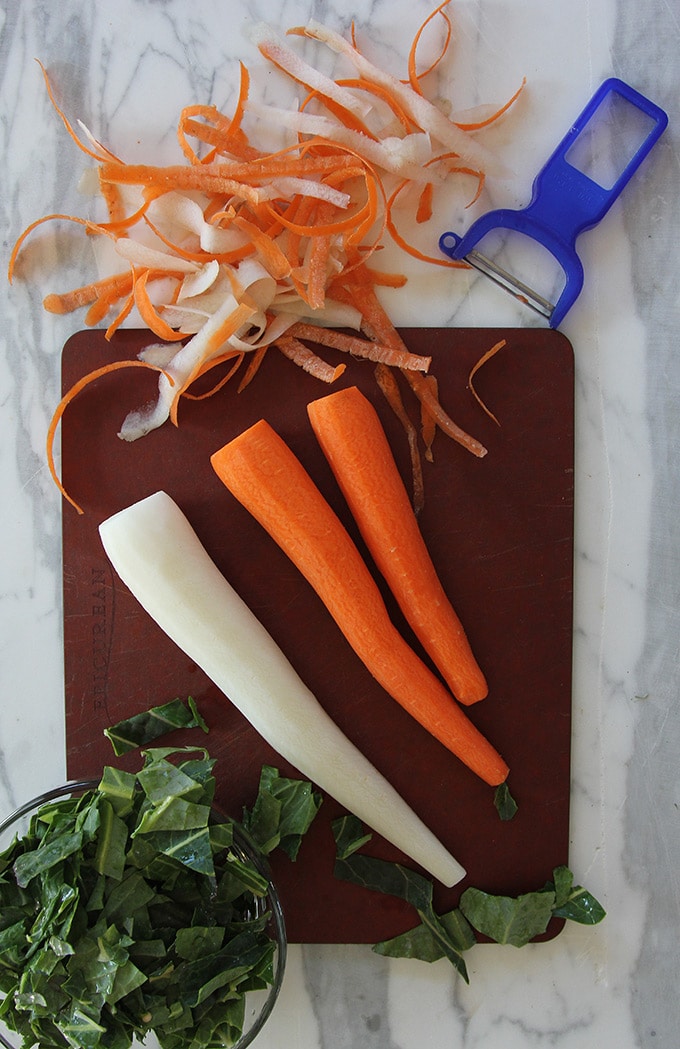
Farmers in North America actually leverage the daikon’s size as a tool for breaking up their soils.
Soil compaction is a big problem for farmers, so daikon’s long tap roots are cherished because they are able to bore down into hard soils.
When their growing season is over, the radishes are left in the ground. As they decompose, spaces remain where the roots were, giving the following crop of potatoes more room to expand. Cool eh?
You may have guessed already that daikon radish hails from Southeast and East Asia. There, they typically feed it to people, rather than to their soils. When I was in northern India, batons of raw white radish came with every meal.
Luckily, daikon radish is commonly available at grocery stores in the West. Its taste is pungent, and a little bitter, which is a good thing! And the bitter taste is mild. Not overpowering at all. Rather, it is refreshing when so much of what we eat is sweet.
According India’s ancient wisdom tradition, Ayurveda, daikon radish is good for daily eating. It is one of the rare foods that is balancing for all bodily constitutions.
Importantly, radish is known to help with digestion. It is low-calorie, anti-inflammatory, and good for the liver.
Oh, and you can definitely eat the radish leaves if they are unblemished. Just wash them, and cook them with the collards (or instead of the collards) if you like.
This radish is particularly good with Japanese and Chinese food, and that is why I recommend it with my Savory Tofu.
But this Seared Vegetable Trio can also be enjoyed as a vegetarian main course, along with a cooked grain such as quinoa, and a fresh green salad, such as my Seared Apple and Cherry Tomato Salad with Goat Cheese.
If you liked this post, please share it with your friends on social media, or leave a comment below.
For more Buttered Veg lifestyle content, follow me on Pinterest, Facebook, Instagram, and Twitter.
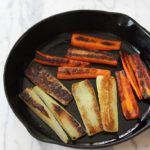
Recipe For Seared Vegetable Trio Of Carrot, Daikon & Collards
Ingredients
- 2 cups (2 large carrots)
- 1 cup daikon radish
- 3 cups collard greens, washed and chopped
- 1 teaspoon Himalayan pink salt, plus more to taste
- 1 tablespoon vegetable oil
Instructions
- Place a medium pot of water on high heat. Salt the water with about 1 teaspoon of salt, and bring to a boil. Meanwhile, peel carrots and daikon radish with a vegetable peeler. Chop off the leaves of the daikon, and the root ends. Save the leaves and cook them with the collards if they are good. Slice the roots into 3-inch lengths.
- After the water boils, add the thickest root sections to the water, and boil for about 4-5 minutes. Add the thinner sections and cook for another 3 minutes. The vegetables are ready when they are tender on the outside, but not all the way through. Remove from water and allow to cool.
- When the root vegetables are cool enough to handle, slice them lengthwise into slabs about a third of an inch thick. Place slices in a bowl. Cover with vegetable oil and sprinkle with salt. Toss the vegetables to coat with oil.
- Heat a medium skillet on medium-high heat and add prepared root vegetables. Arrange the roots into an even layer on the bottom of the pan. Allow to cook until caramelization reaches a golden brown. Turn each piece individually and cook another few minutes. Remove the vegetables and return the skillet to the heat.
- Using the same bowl as before, add the prepared collards and mix them with the remaining oil in the bowl. Sprinkle generously with salt and add to the skillet. Caramelize the greens. This will take only a couple of minutes. Remove.
To serve
- These vegetables are very pretty with the three contrasting colors of orange, white, and green. Try arranging them on a platter with the greens as a bed underneath the roots.
- As I mentioned earlier, enjoy this recipe with Savory Tofu on sourdough toast. Spread mayonnaise, add tofu, and top with the colorful vegetables.
Nutrition
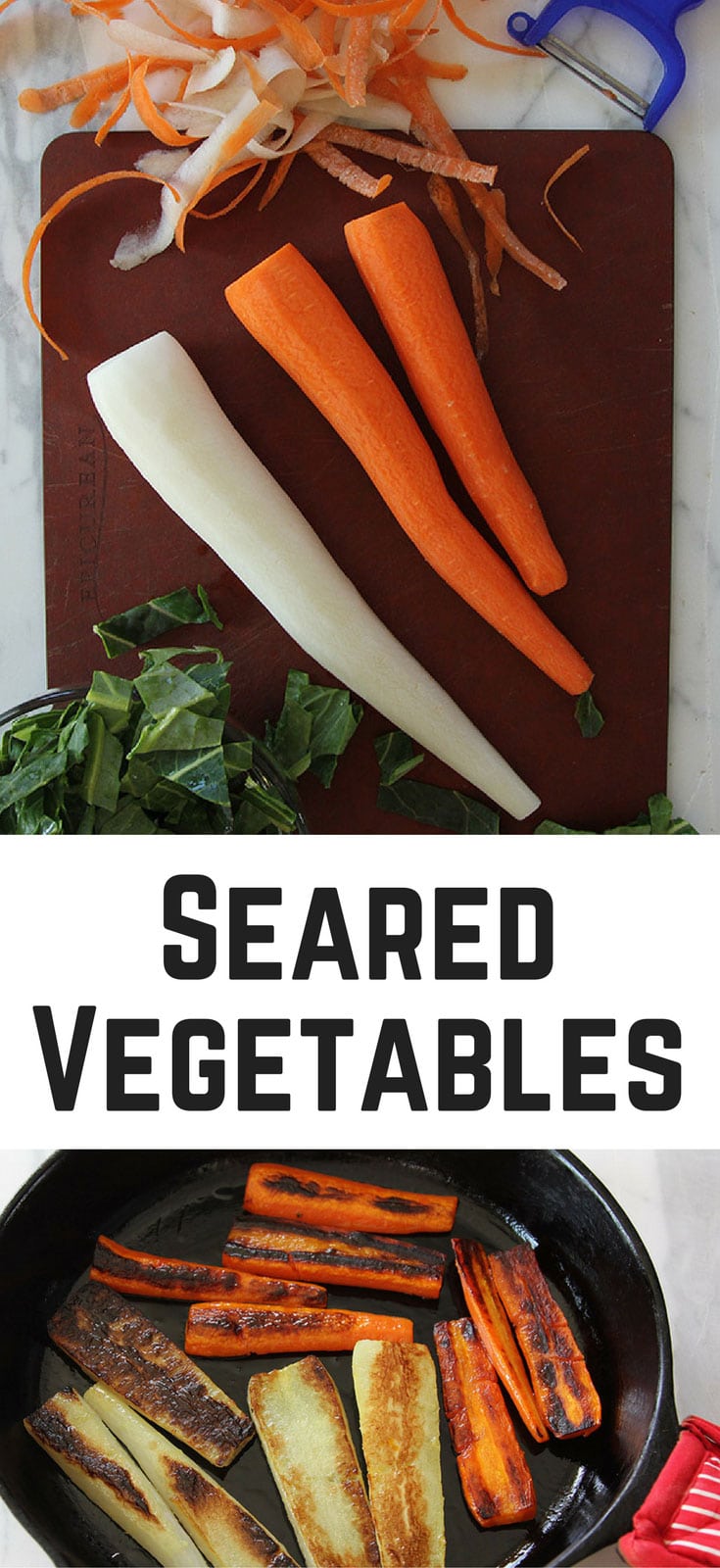




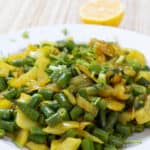




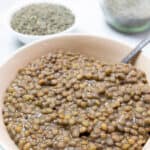
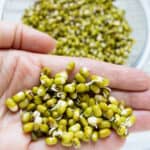
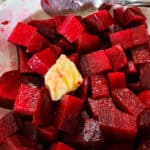

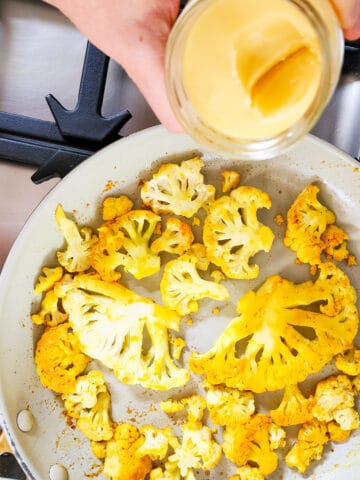
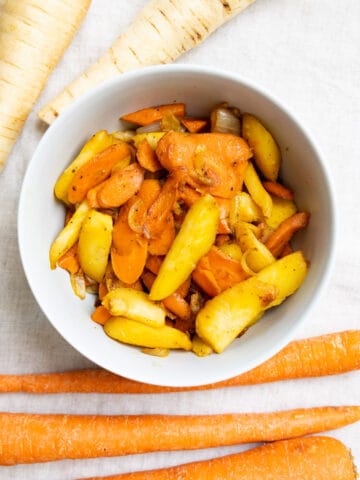
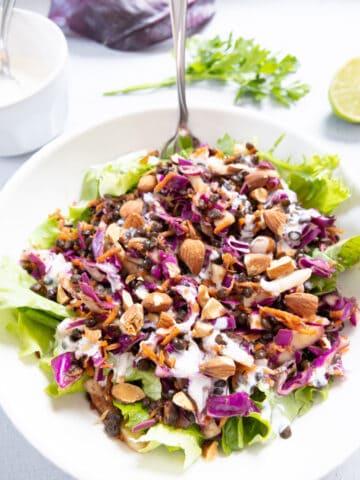
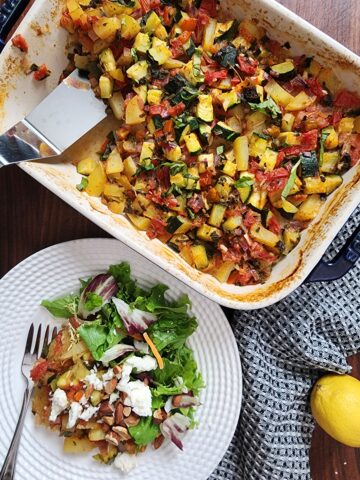
Leave a Reply